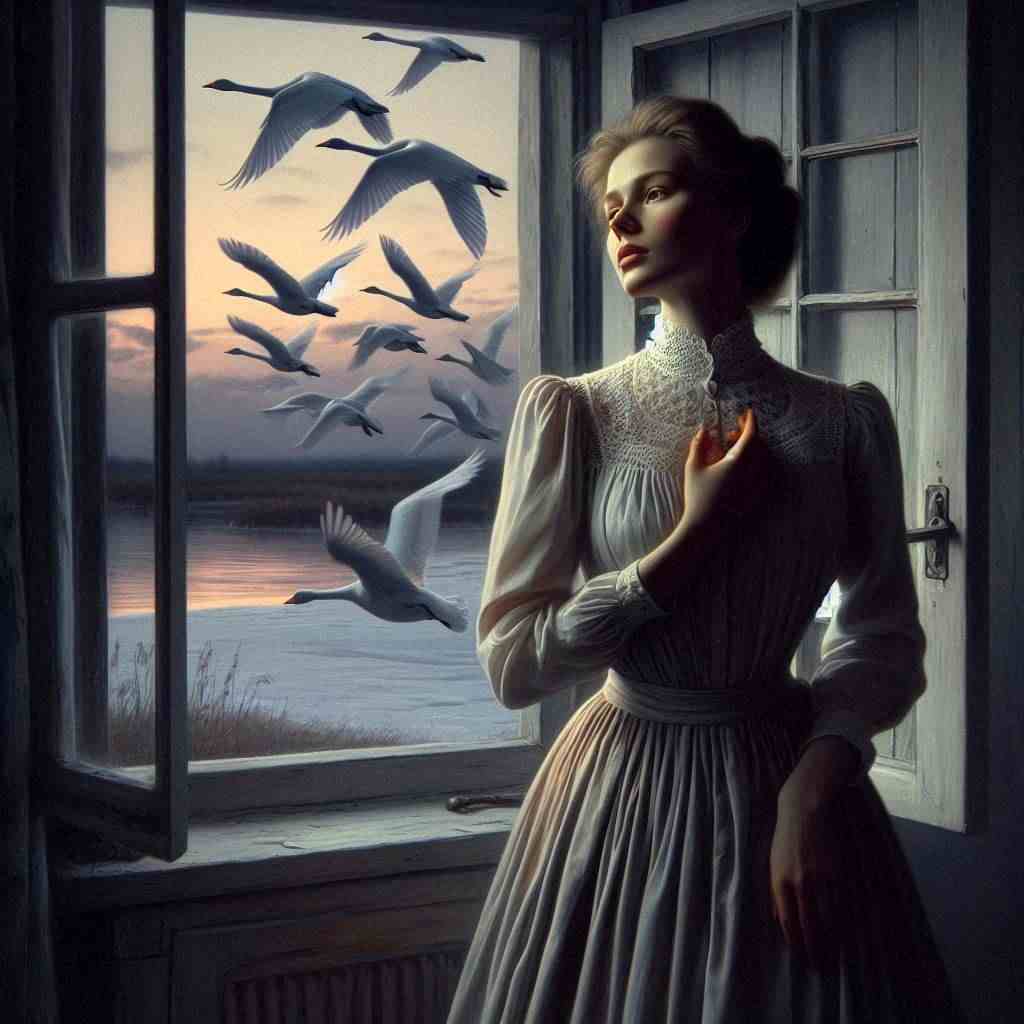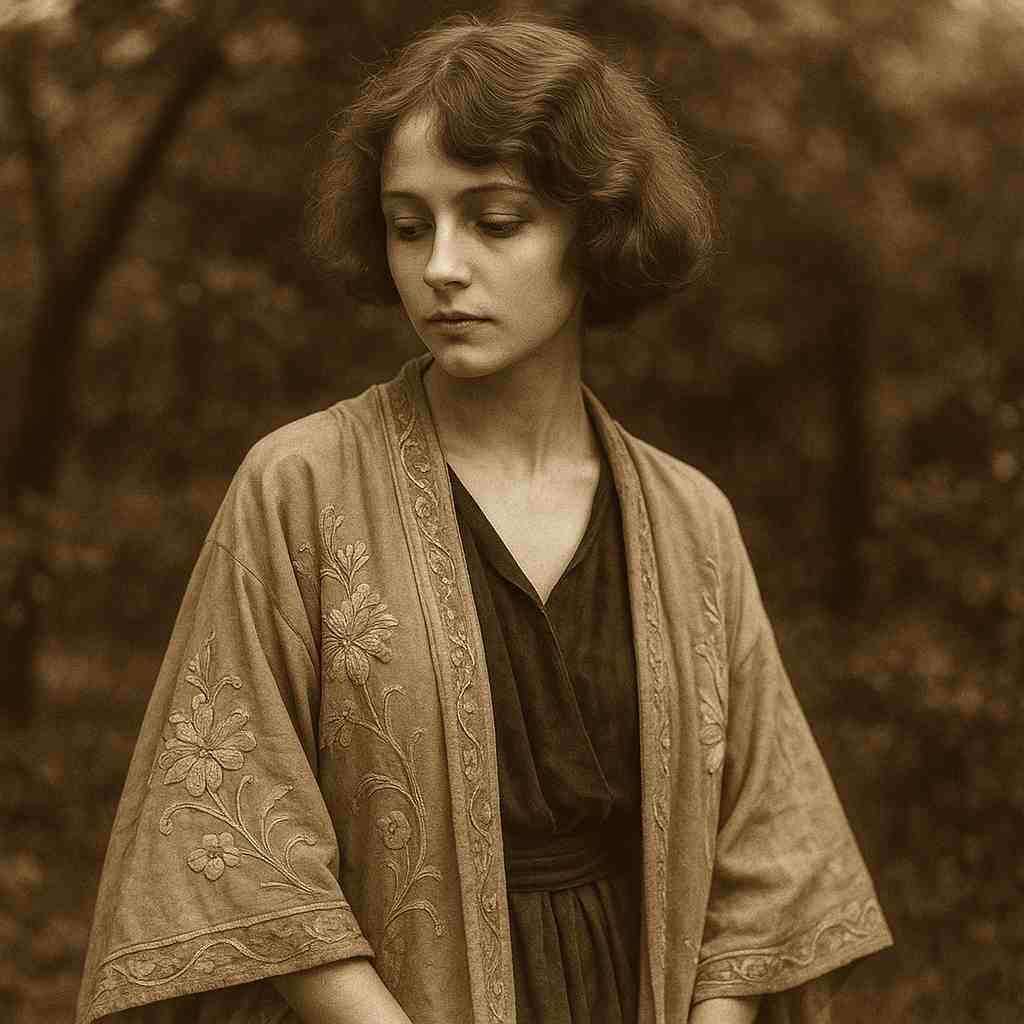Wild Swans
Edna St. Vincent Millay
1892 to 1950

I looked in my heart while the wild swans went over.
And what did I see I had not seen before?
Only a question less or a question more;
Nothing to match the flight of wild birds flying.
Tiresome heart, forever living and dying,
House without air, I leave you and lock your door.
Wild swans, come over the town, come over
The town again, trailing your legs and crying!
Edna St. Vincent Millay's Wild Swans
Introduction
Edna St. Vincent Millay's poem "Wild Swans" is a masterful exploration of the human psyche, juxtaposing the ethereal beauty of nature with the complexities of the human heart. This concise yet profound piece, published in 1921, exemplifies Millay's ability to distill complex emotions into deceptively simple verses. Through a careful examination of its structure, imagery, and thematic elements, we can uncover the layers of meaning embedded within this seemingly straightforward poem.
Structure and Form
"Wild Swans" is composed of eight lines, forming an irregular rhyme scheme that mirrors the poem's central theme of restlessness and uncertainty. The first four lines follow an ABBA pattern, while the last four adopt an ABAB structure. This shift in rhyme scheme reflects the speaker's changing perspective throughout the poem, moving from introspection to a desperate outward plea.
The poem's meter is predominantly iambic pentameter, a choice that lends a sense of natural rhythm to the verse, echoing the measured wingbeats of the swans. However, Millay occasionally breaks this pattern, particularly in the fifth line, "Tiresome heart, forever living and dying," which contains an extra syllable. This disruption in the metrical flow emphasizes the speaker's frustration with their own emotional state.
Imagery and Symbolism
Central to the poem is the image of the wild swans, a powerful symbol laden with multiple layers of meaning. Swans have long been associated with grace, beauty, and purity in Western literature. However, Millay subverts these traditional associations by emphasizing the "wild" nature of these birds. The wildness of the swans represents a freedom and vitality that the speaker yearns for but cannot attain.
The flight of the swans "over the town" creates a vivid contrast between the earthbound human observer and the liberated birds. This juxtaposition is further accentuated by the image of the swans "trailing your legs and crying," which imbues them with a sense of both grace and melancholy. The crying of the swans can be interpreted as a lament for the earthbound observer, unable to join their flight.
The heart, described as "tiresome" and "forever living and dying," becomes a central metaphor for the human condition. It is portrayed as a "house without air," a stifling, oppressive space that the speaker wishes to escape. This imagery evokes a sense of suffocation and confinement, standing in stark contrast to the open skies traversed by the swans.
Thematic Analysis
At its core, "Wild Swans" is a meditation on the human desire for transcendence and the limitations of our earthly existence. The speaker's act of looking into their heart while observing the swans suggests a moment of deep introspection, a search for some profound truth or revelation. However, this search yields only "a question less or a question more," highlighting the futility of seeking definitive answers to life's mysteries.
The phrase "Nothing to match the flight of wild birds flying" encapsulates the poem's central conflict. It speaks to the unbridgeable gap between human aspiration and the unattainable freedom represented by the swans. This sentiment echoes the Romantic poets' preoccupation with the sublime in nature and humanity's attempts to comprehend or emulate it.
Millay also explores themes of emotional fatigue and the desire for escape. The heart, personified as tiresome and trapped in an endless cycle of living and dying, represents the exhaustion that comes from constant emotional turmoil. The speaker's declaration, "I leave you and lock your door," can be interpreted as an attempt to distance oneself from these overwhelming feelings, perhaps in pursuit of the freedom embodied by the swans.
Literary Context and Influences
"Wild Swans" showcases Millay's ability to blend traditional poetic forms with modernist sensibilities. The poem's structure and use of natural imagery recall the works of Romantic poets like Wordsworth and Keats. However, Millay's treatment of these elements is distinctly modern, characterized by a sense of disillusionment and emotional complexity that resonates with the post-World War I zeitgeist.
The influence of Emily Dickinson can be discerned in Millay's economical use of language and her ability to convey profound ideas through seemingly simple observations. Like Dickinson, Millay employs natural imagery as a vehicle for exploring complex emotional and philosophical concepts.
Moreover, the poem's focus on the inner life of the speaker and the use of stream-of-consciousness techniques align "Wild Swans" with the modernist movement. The abrupt shifts in tone and perspective, from introspection to outward plea, reflect the fragmented nature of modern consciousness as explored by writers like Virginia Woolf and James Joyce.
Feminist Interpretation
While not overtly feminist in its themes, "Wild Swans" can be read through a feminist lens, considering Millay's status as a pioneering female poet in the early 20th century. The desire for freedom and transcendence expressed in the poem could be interpreted as a metaphor for women's struggle against societal constraints.
The image of the "house without air" takes on additional significance when viewed from this perspective, potentially representing the stifling domesticity traditionally imposed upon women. The speaker's decision to leave and lock the door of this metaphorical house could be seen as an act of rebellion against these constraints.
Furthermore, the wild swans themselves, with their ability to traverse boundaries freely, become potent symbols of female emancipation. The speaker's final plea for the swans to return "trailing your legs and crying" might be read as a call for solidarity among women, urging them to challenge societal norms and expectations.
Conclusion
Edna St. Vincent Millay's "Wild Swans" is a tour de force of poetic craftsmanship, distilling complex philosophical and emotional concepts into a mere eight lines. Through its masterful use of imagery, symbolism, and formal techniques, the poem invites readers to contemplate the human condition, our relationship with nature, and our eternal quest for meaning and transcendence.
The enduring appeal of "Wild Swans" lies in its ability to speak to universal human experiences while maintaining a deeply personal and intimate tone. Millay's poem continues to resonate with readers today, offering a poignant reflection on the beauty and limitations of human existence, and the ever-present tension between our earthly bonds and our aspirations for something greater.
As we continue to grapple with questions of identity, freedom, and our place in the natural world, "Wild Swans" remains a powerful touchstone, inviting us to look into our own hearts and confront the wild, untameable aspects of our nature. In doing so, we may find ourselves, like Millay's speaker, simultaneously frustrated by our limitations and inspired by the possibility of transcendence, forever watching the wild swans go over.
This text was generated by AI and is for reference only. Learn more
Want to join the discussion? Reopen or create a unique username to comment. No personal details required!



Comments
No comments yet. Be the first to comment!